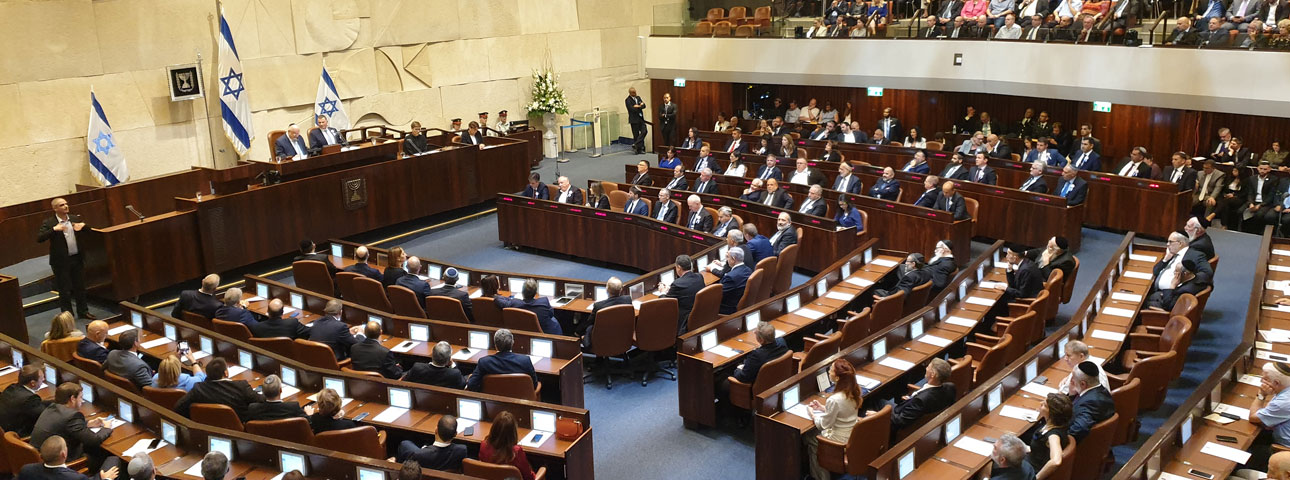Constructive Motions of No-Confidence: Q&As
IDI experts Prof. Gideon Rahat and Dr. Chen Friedberg explain what a Constructive No-Confidence Vote means for the stability of Israel’s government.

What is a constructive motion of no-confidence? How does it differ from a regular motion of no-confidence?
A constructive motion of no-confidence is a special form for expressing a lack of parliamentary support for an incumbent government. It was devised in order to prevent the frequent toppling of governments and to strengthen the executive branch. When the opposition submits a constructive motion of no-confidence, then, unlike in the “regular” no-confidence mechanism of the past, it must also demonstrate that it has the ability to establish a new government. In other words, a constructive no-confidence motion has a dual purpose: a majority of the parliamentary indicates that it no longer has confidence in the current government (“destructive”) and at the same time votes to install a new government (“constructive”). In Israel, passage of such a motion requires an absolute majority of the Knesset—61 votes or more.
When did the Knesset change the no-confidence mechanism?
A partial form of constructive no-confidence (a majority of the full Knesset plus a vote to set up the new government) was adopted in 2001, when direct election of the prime minister was abolished. In 2014, the full version was installed, with the relatively stringent requirement that the proposed new government be presented to the Knesset plenum as part of the vote to bring down the current government.
Does the constructive no-confidence mechanism exist in other countries?
The ability to vote no-confidence in an incumbent Government is an essential element of any parliamentary regime. Most countries employ the standard mechanism, but several, including Germany, Spain, Belgium, Hungary, Slovenia, and Poland, have adopted the constructive version.
Who is entitled to submit a constructive motion of no-confidence to the Knesset?
Any Knesset faction, or several factions, can submit a motion of no-confidence in the government and support for a different government (which means that this is a tool reserved for factions and not available to individual Knesset members). If several factions cosponsor a single motion they are seen as composing a single faction.
Is there a limit on the number of constructive no-confidence motions that can be submitted?
A faction with fewer than seven members can submit three such motions in a single Knesset session (parliamentary year); a faction of seven to nine members can submit four no-confidence motions.
How is a constructive no-confidence motion submitted?
A no-confidence motion can be filed as a motion for the agenda or as the concluding motion of any item on the agenda. In order to submit such a motion, a faction must provide the clerk of the Knesset with the written text of the proposed Government’s basic guidelines, its composition, and the distribution of portfolios among its members. This document must be signed by the prospective Prime Minister, with the consent of all the proposed ministers attached. The document will remain in effect as long as the faction submitting it has not retracted it.
What is the timetable for a constructive no-confidence motion?
A no-confidence motion submitted as a motion for the agenda will be debated in the first week of the Knesset session, and the change will be made no later than the last Wednesday of the recess before a session.
Can a constructive no-confidence motion be submitted when the Knesset is in recess?
A vote of no-confidence, as a motion for the agenda, can be submitted during a Knesset recess and will come up for debate at the first session after the recess, unless the motion was submitted by 61 MKs, in which case it must be brought up for debate within a week even during a recess (§44(e)(1) and (3)).
If no-confidence is proposed as the conclusion of an item already on the agenda, such as a bill on its first or second reading, the motion can be submitted during a recess if the plenum is debating the bill, but the vote on it will be deferred until the first regular session after the recess, unless the Government requests an immediate vote, which will be held even during a Knesset recess.
